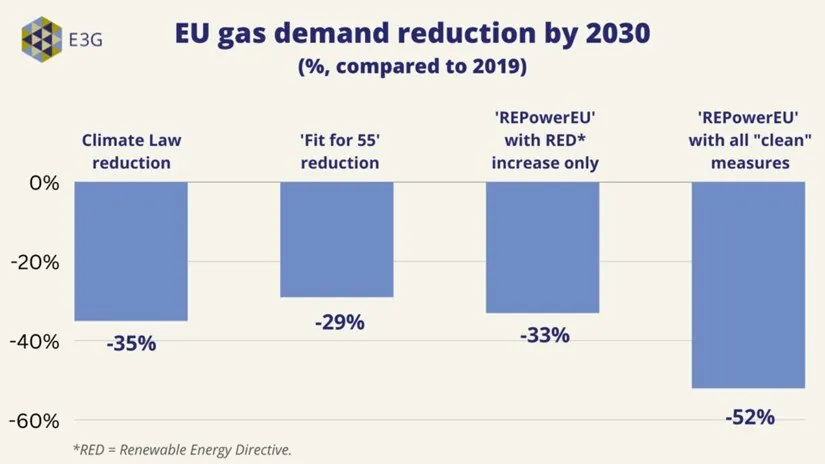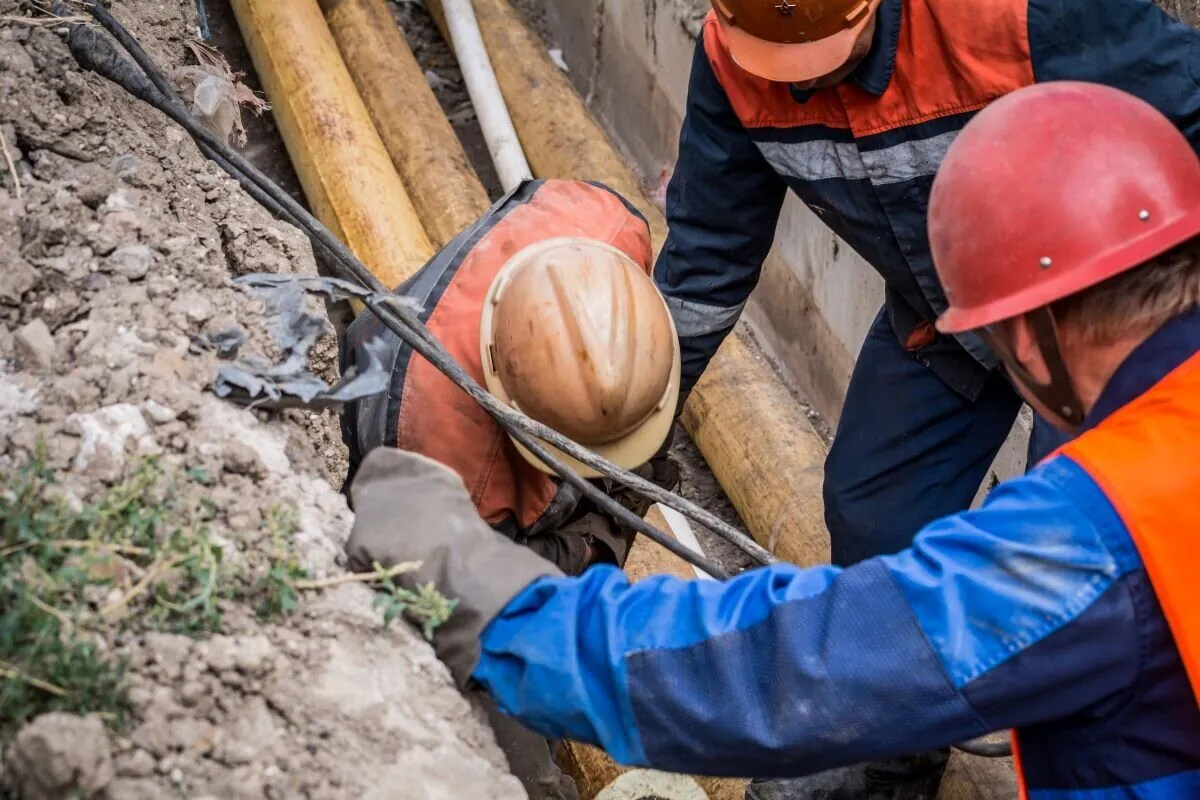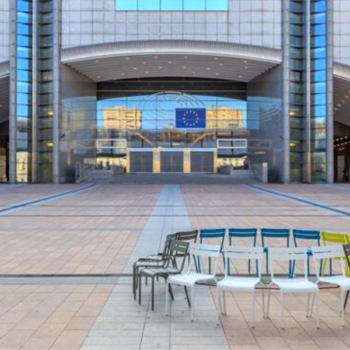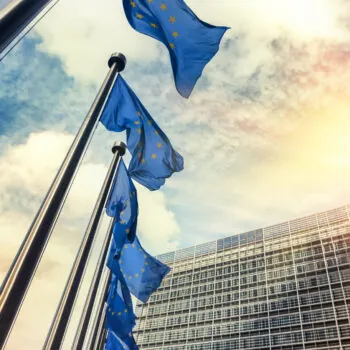As a response to Russia’s invasion of Ukraine and in line with its energy and climate objectives, the European Union (EU) is on track for a significant reduction in fossil gas consumption.
Its ambitions are high: REPowerEU aims to halve the EU’s gas consumption by 2030 compared to 2019, which would almost align the bloc’s trajectory with a climate neutral pathway. Its legislative package so far puts it on track for a 30% reduction in gas demand.

The speed of change we are seeing in the real economy, driven by the exponential deployment of renewables and heat pumps, already impacts gas consumption. German utilities are already experiencing the financial impact of declining gas consumption but with little support to make this transition easier to manage – and yet the speed is not sufficient for a climate-aligned transition.
The revised National Energy and Climate Plans (NECPs) can become a tool to close the gap and smooth transition. Member States are supposed to submit final versions by June 2024 – prior to that they will undergo an assessment by the European Commission. According to Commission guidance, these plans should integrate the latest EU climate and energy legislations encompassed within the Fit For 55 package and the REPowerEU initiative. Specific to gas, the NECP guidelines focus on the EU’s immediate energy crisis response concerns, such as increasing energy preparedness, adopting emergency regulations, and short-term supply diversification.
For a transition that sets us on a both smooth and ambitious path to secure the EU’s climate and REPowerEU goals, we believe that NECPs should detail a comprehensive gas consumption reduction strategy complete with actionable milestones. To this effect, E3G proposes seven benchmarks to extract from NECPs whether they support a smooth transition of the gas sector. These benchmarks will help both the EU and Member States to ensure the NECPs become a tool to reduce vulnerability to supply shortages and ensure infrastructure plans are effectively aligned with this vision.
| NECPs gas benchmarks | In the guidelines? |
| Aligning national gas consumption with overall EU trajectory Implementing the Fit for 55 package should lead at minimum to a 33% reduction in gas use and the implementation of REPowerEU plan to a 52% reduction by 2030. | 1.1 Raising 2030 ambitions towards climate neutrality “The draft updated national plans should reflect this increase of ambition. Member States should fully embed the new and revised energy and climate targets included in the Fit for 55 and the REPowerEU proposals even though the legislative process for adoption is not yet concluded” |
| Preparing the gas network for a reduction in fossil gas use Member States are supposed to reflect progress and planning on the critical infrastructure projects to deliver the European Green Deal and REpowerEU objectives, making sure that infrastructure projects do not lead to stranded assets that would jeopardize the energy transition. | 1.2 Increase energy security and affordability, towards a more resilient Energy Union “Member States are also encouraged to reflect progress and planning on the infrastructure projects that are identified as significant to meet the European Green Deal and the REPowerEU objectives.” |
| Addressing fossil gas subsidies and having a plan to phase them out Addressing fossil gas subsidies and having a plan to phase them out is essential to meeting climate goals. As mentioned in the European Commission’s guidance, updated energy and climate plans should reflect decisions to phase out fossil fuel subsidies. The G7 also committed to phasing out inefficient fossil fuels subsidies by 2025. | 1.1 Raising 2030 ambitions towards climate neutrality “The updated plans should also reflect the international developments related to the Paris Agreement, in particular the process set out by the Glasgow Climate Pact for raising mitigation ambition ( 27). This contains several decisions on energy and climate planning, including the phasing down of coal power, the phasing out of fossil fuel subsidies, and the consideration of further actions to reduce non-CO2 emissions, including methane, by 2030.” |
| Assessing, in a science-based manner, the potential for renewable gas development Member States are expected to report the expected import and export of Renewable Fuels of Non-Biological Origin (RFNBO) in their NECPs. Describing how much renewable gas such as biomethane or renewables-based hydrogen they intend to produce and consume by 2030 will provide insights into the implications of renewable gas development on existing and planned infrastructure. | 2.1.1 Accelerating the roll-out of renewable energy and hydrogen “In their updated NECPs, Member States are also encouraged to integrate a component on sustainable biogas and biomethane production and use, assessing the national potentials and defining trajectories to reach those by 2030 and 2050” |
| Assessing and addressing the social and economic impact of gas consumption decrease This assessment should include considerations for potential job transitions, economic transformation support, and community engagement to ensure a just transition for stakeholders affected by the phasing-down of gas. | Box 1: Principles and good practices for updating national energy and climate plans “Strengthen planning within the NECPs to ensure a fair and just transition, mitigating social and employment impacts, tackling labour and skills shortages, reducing energy poverty, and ensuring affordable access to essential services for all.” |
| Phasing out long-term gas contracts in line with declining fossil gas use Member States should list existing long-term gas contracts and their end date to ensure that they are in line with the declining fossil gas use foreseen by the EU climate objectives. Member States should also develop a plan to phase out long-term gas contracts altogether as foreseen by the Hydrogen and Decarbonised Gas Market Package. | Not in the commission’s guidelines, but a consolidated view of the long-term contracts of the main EU gas consumers would enable a comparison between the EU’s expected gas volumes and its climate commitments. |
| Assessing the feasibility and scale of gas networks to be decommissioned The future volumes of renewable gas might not be at the same level as the current gas consumption, especially at distribution level, meaning that some parts of those networks might have to be decommissioned. Conducting feasibility studies to evaluate the economic, technical, and environmental aspects of decommissioning gas networks will be crucial. | Not in the commission’s guidelines, but understanding the future utilisation of the distribution network and its eventual decommissioning is crucial to plan for the expected decrease in gas use. |


